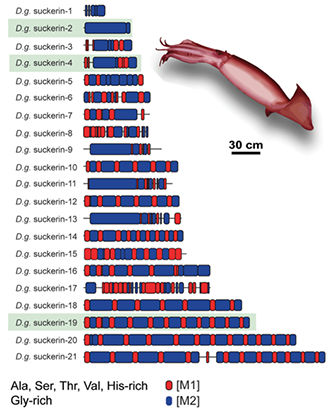Living organisms are “green chemist” masters, producing high-performance and multi-functional materials under benign environmental conditions, with a limited amount of building blocks. Thus, they provide important lessons in eco-friendly processing. Proteins constitute either the structural components of biological materials or the templates that control the growth and self-assembly of inorganic components into complex hierarchical biocomposites. However, a critical step –and often the bottleneck– in biomimetic engineering involves determining the primary protein sequences of naturally occurring biomaterials, a challenge exacerbated by the lack of genomic data from many model organisms. Protein sequence is not only important to elucidate structure/properties relationships of biological materials, but also to fundamentally understand the bio-processing pathways by which living organisms make high-performance materials.
In this talk, our pioneer efforts in establishing Next-Generation sequencing (RNA-Seq) in the context of biomimetic materials engineering will be described[1]. I will discuss how RNA-Seq, integrated with proteomics and biophysical characterization (vibrational spectroscopy, x-ray scattering, nano-mechanics), offers an ideal platform that dramatically facilitates biomimetics research. I will specifically illustrate our efforts in deploying this platform towards Sucker Ring Teeth (SRT) that line up the tentacles of squids and cuttlefish[2]. SRTs are remarkable protein-based materials that can compete with the best structural synthetic polymers, with an elastic modulus of ~ 8 GPa. Despite these impressive properties, inter-chain chemical cross-linking is absent and the teeth are fully stabilized by a network of hydrogen bonds. SRT thus represent a unique natural thermoplastic biomaterial[3] that can be re-processed multiple times, just like standard synthetic thermoplastics. We have shown that SRT are entirely made of modular proteins encoded by an ancient gene family, which assemble into a supramolecular network reinforced by nano-confined beta-sheets[4].

We have also established recombinant expression systems that allow us to readily express full-length SRT proteins in large quantities[5]. Recombinant SRTs can be conveniently processed from aqueous solutions and their specific molecular and nano-scale architecture can be exploited to prepare biomaterials spanning 7-orders of magnitude of elasticity, from soft gels matching the elasticity of liver to stiff films with a Young’s modulus approaching that of bone[6].

The ease of processability and intrinsic redox activity of SRT proteins can also be exploited to induce the growth of metallic nanoparticles without reducing agents, including from redox active nano-structured substrates[7].
This research was funded by the Singapore National Research Foundation (NRF) and by the Singapore Ministry of Education (MOE)
References:
[1] Guerette, P. A. et al. Accelerating the Design of Biomimetic Materials by Integrating RNA-Seq. with Proteomics and Materials Science. Nature Biotechnology 31, 908–915, (2013).
[2] Miserez, A. et al. Microstructural and Biochemical Characterization of the Nano-porous Sucker Rings from Dosidicus gigas. Advanced Materials 21, 401-406, (2009)
[3] Latza, V. et al. Multi-Scale Thermal stability of a Hard Thermoplastic Protein-Based Material. Nature Communications (accepted) (2015).
[4] Guerette, P. A. et al. Nanoconfined β-sheets Mechanically Reinforce the Supra-Biomolecular Network of Robust Squid Sucker Ring Teeth. ACS Nano 8, 7170–7179, (2014).
[5] Ding, D. et al. Biomimetic Production of Silk-Like Recombinant Squid Sucker Ring Teeth Proteins. Biomacromolecules 15, 3278–3289, (2014)
[6] Ding, D. et al. From Soft Self-Healing Gels to Stiff Films in Suckerin-Based Materials Through Modulation of Cross-Link Density and β-Sheet Content. Advanced Materials 27, 3953-3961, (2015).
[7] Cantaert, B. et al. Stable Formation of Gold Nanoparticles onto Redox-Active Solid Bio-Substrates Made of Squid Suckerin Proteins. Macromolecular Rapid Communication, (DOI: 10.1002/marc.201500218), (2015).